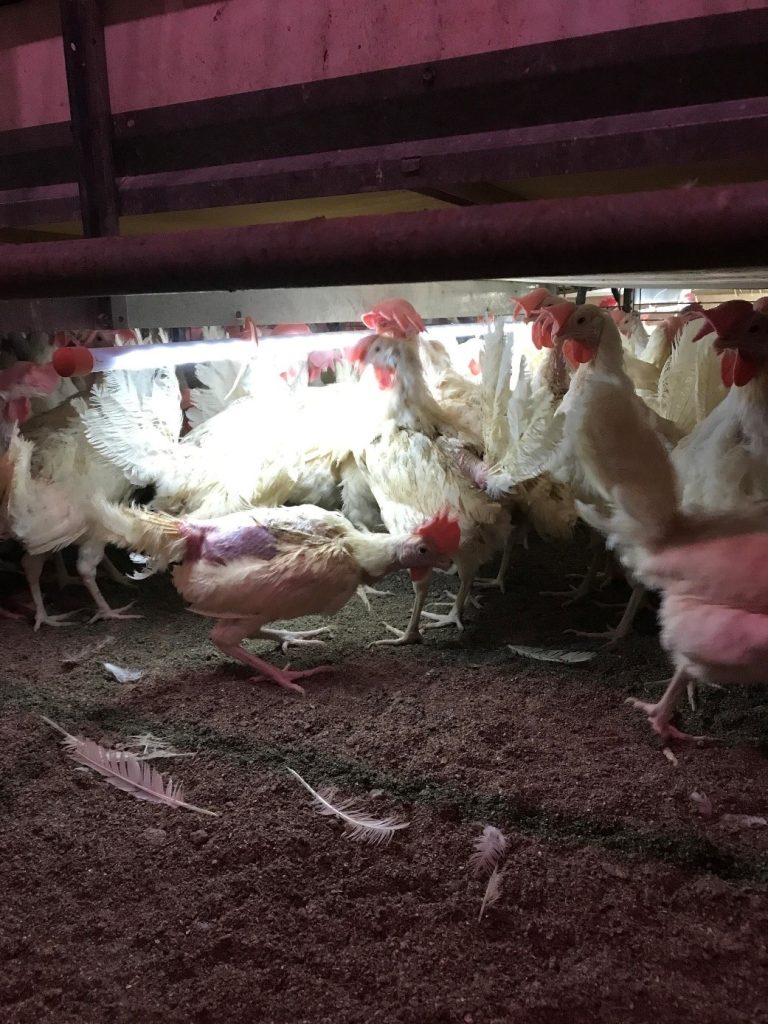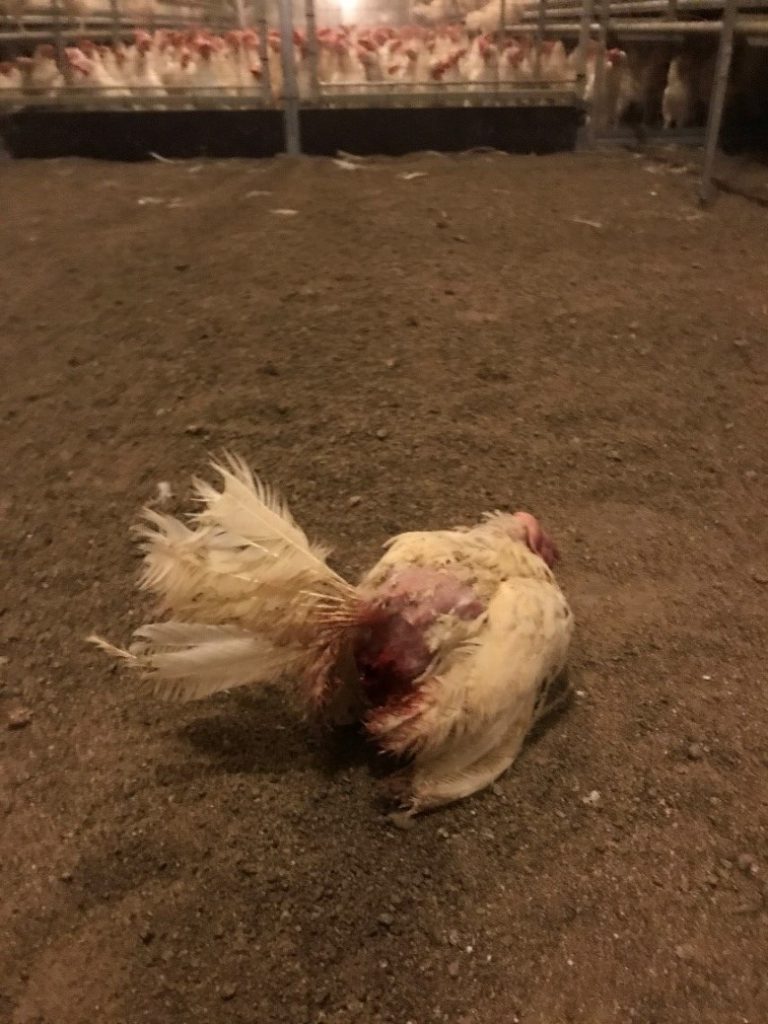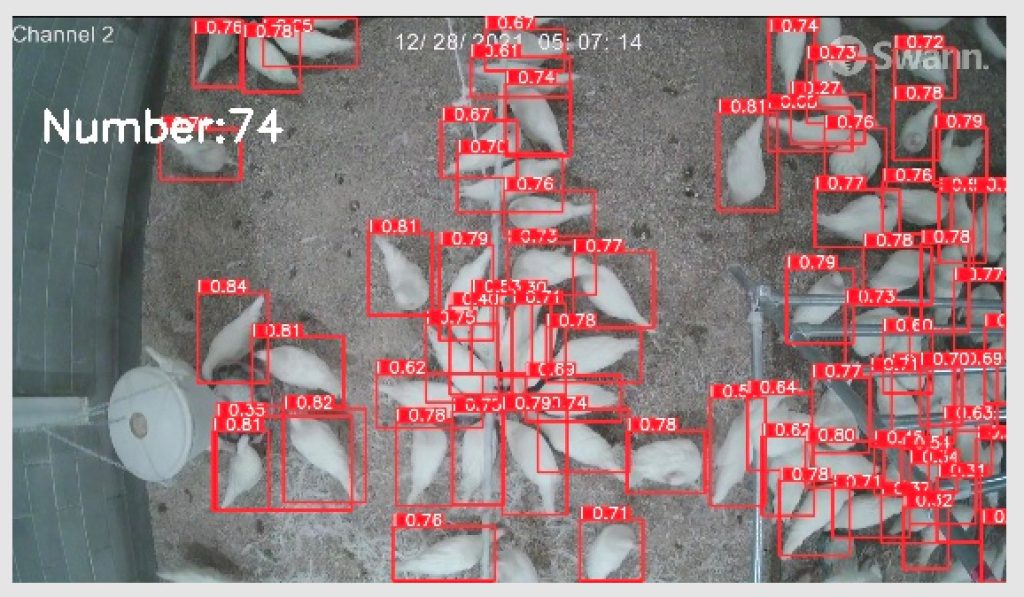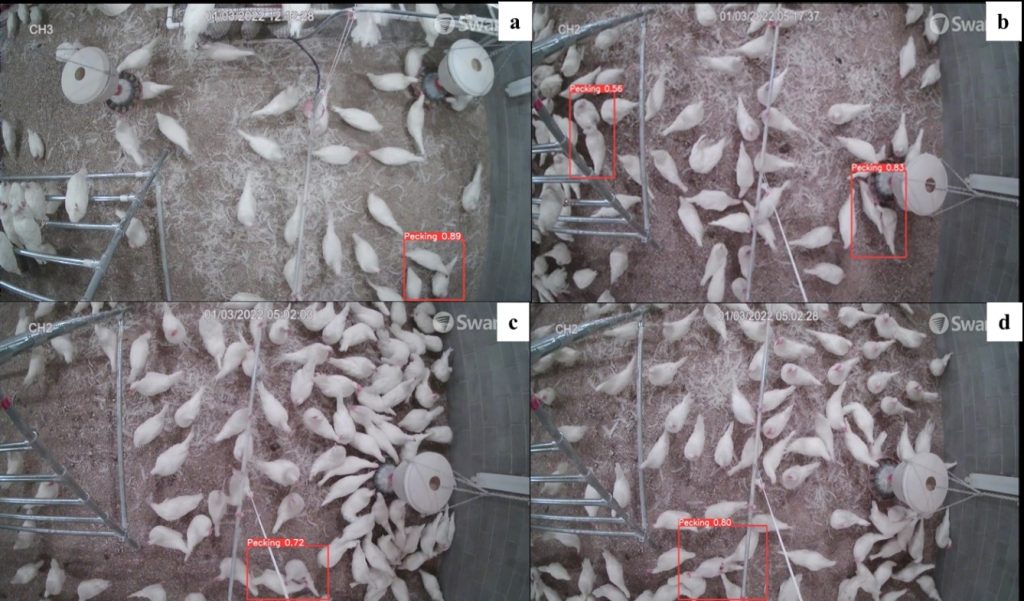US Egg production is transitioning from conventional cage to cage-free system. While cage-free system allows birds to perform natural behaviors such as dustbathing, foraging, and perching, an inherent challenge is feather pecking (FP, Figure 1). Pecking is one of the primary welfare issues in commercial cage-free hen houses as that can seriously reduce the well-being of birds and cause economic losses for egg producers. Figure 2 shows a severely pecked bird (cannibalism) we observed in a commercial cage-free house. After beak trimming is highly criticized in Europe and the USA, alternative methods are needed for pecking monitoring and management. A possibility for minimizing the problem is early detection of FP behaviors and damages to prevent it from spreading or increasing as feather pecking is a learned behavior.

Figure 1. Hens with less feathers due to pecking in a commercial cage-free house (Photo credit: Lilong Chai).

Figure 2. A severely pecked hen in a commercial cage-free house (Photo credit: Lilong Chai).
The researchers at the University of Georgia developed a machine vision method for detecting the hens (Figure 3) and their pecking behaviors (Figure 4) in the cage-free facilities. Two YOLOv5 based deep learning models, i.e., YOLOv5s-pecking and YOLOv5x-pecking, were developed and compared in tracking FP behaviors of laying hens in research cage-free facilities at the University of Georgia, Athens, GA. According the performance based on a dataset of 1924 images (1300 for training, 324 for validation, and 300 for testing), two deep learning models (i.e., YOLOv5x-pecking and YOLOv5s-pecking) have reached up to 85% of precision in identifying birds’ pecking behaviors. YOLOv5x-pecking model had a 3.1 %, 5.6 %, and 5.2 % higher performance in precision, recall, and Map than YOLOv5s-pecking model, respectively. However, YOLOv5s-pecking model size is 80% smaller, and thus used 75% less GPU memory and 80% less time in model training than YOLOv5x-pecking model for the same dataset. Therefore, YOLOv5s-pecking model was considered with superior performance.

Figure 3. YOLOv5 model for monitoring cage-free hens (Photo credit: Lilong Chai).

Figure 4. Performance of YOLOv5-pecking deep learning model in pecking detection: a – pecking in a rest zone, b – pecking in a feeding zone, c – pecking in a drinking zone; d – two birds are pecking one bird (i.e., the same bird in c was pecked by the two birds at the same time) (Photo credit: Lilong Chai).
This study was among the first to apply the YOLOv5 modified models to track problematic behaviors (i.e., pecking) and damages in the cage-free hen house, an emerging laying hen housing system in the USA and EU countries. It is predicted that 70 % of total laying hens in the US (320 million hens) and 100 % of hens in EU countries (370 million hens) will be under cage-free production by 2030. Severe feather pecking has been estimated to occur in 40%-50 % of cage-free flocks. Therefore, the model provides a basis for developing a real-time automatic model for tracking pecking damages in commercial cage-free houses to protect the health and welfare of hundreds of millions laying hens.
Further reading:
Subedi, S., Bist, R.B, Yang, X., Chai, L (2023). Tracking Pecking Behaviors and Damages of Cage-free Laying hens with Machine Vision Technologies. Computers and Electronics in Agriculture, 204 (1), 107545. https://doi.org/10.1016/j.compag.2022.107545